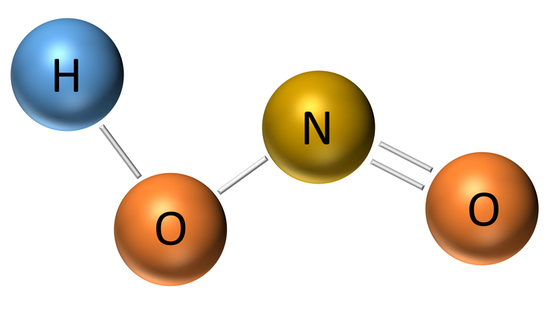The importance of nitrous acid (HONO) in atmospheric chemistry stems from its role as precursor of the OH radical. The latter is among the most important oxidizing molecules and controls the degradation of pollutants and greenhouse gases, and contributes to ozone formation and photochemical smog. Accurate representation of HONO sources is highly relevant to the modeling of climate and air quality. However, many uncertainties remain on the formation mechanisms, in part due to the lack of large-scale HONO measurements.
The main sink of HONO during daytime is photolysis
HONO + hν → NO + OH
which limits the lifetime of HONO to several tens of minutes only.
In biomass burning plumes, HONO is believed to be directly emitted (or very rapidly formed by pyrogenic precursors). For aged plumes, secondary heterogeneous processes probably play an important role in sustaining daytime HONO levels.
In urban environments, the formation mechanisms are rather uncertain. Models greatly underestimate HONO levels when only gas-phase chemistry is accounted for, and it is accepted that heterogeneous HONO chemistry is necessary to explain both the daytime and nighttime observations. The heterogeneous processes include conversion on nitrogen dioxide (NO2) on aerosols, soot, surfaces, and photolysis of adsorbed nitric acid and particulate nitrate.

